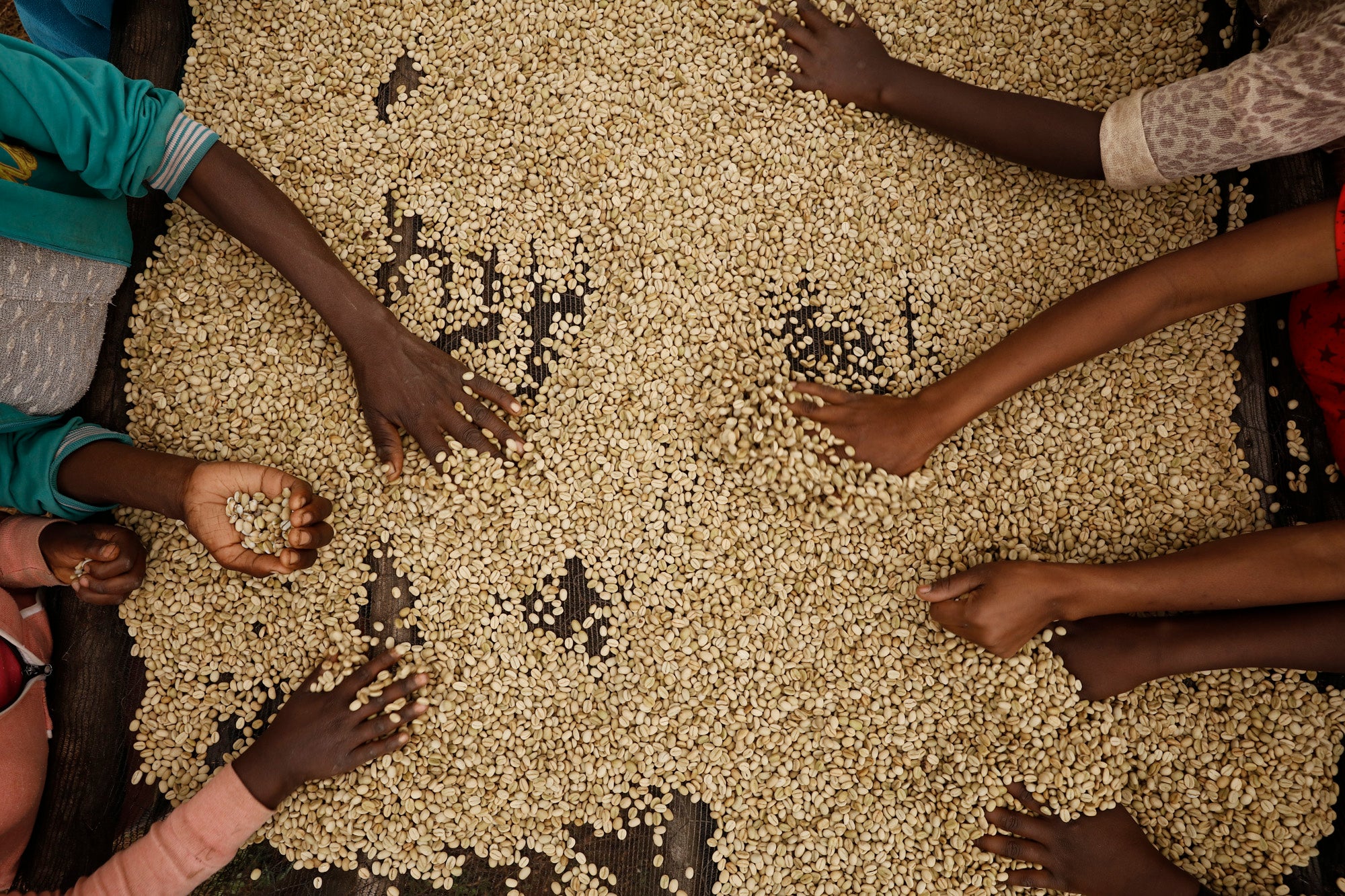SCISSOR -experimentet - Alasitas Gesha
Det finns många experiment med att bearbeta specialkaffe för tillfället. Detta kaffe är mjölkbehandlat, vilket är mycket intressant. Men det finns ett annat experiment, under detta, som retar oss ännu mer; hur kaffet har tagits bort från kaffeplantans gren och skördats utan att bryta kaffekörsbärsstrukturen. Istället för att plocka kaffet för hand, innebär den här metoden att man skär av dem från grenen, körsbär för körsbär, med sax. Vi säger inte att detta är riktningen att gå, det är bara ett experiment om hur man kan öka den högsta nivån av kaffe ännu mer.
Du kan köp Scissor Experiment Gesha här så länge det är tillgänglig.
Med all ödmjukhet för kostnaden för att producera ett kaffe som skördats i vägen, är vi otroligt glada över att se hur denna mildhet förbättrar kaffekvaliteten.
I allmänhet sker en huvudskörd en gång per månad i kaffeproducerande länder. I Bolivia är det vanligt att man tar in säsongsarbetare som hjälper till att plocka kaffet för hand. En av de största kostnaderna under skörden är och bör vara arbetarnas lön. Utöver det är det ofta producenten som organiserar och betalar för transporter och försäkringar. För att producera kvalitet får arbetarna betalt för att bara välja rätt mognadsnivå för kaffekörsbäret, inte bara baserat på volym. Detta tar mycket mer tid (därav kostnad) än att använda processer som på den kommersiella marknaden, där kaffet antingen tas bort från grenen på en gång eller skakas från trädet med hjälp av maskiner.

När kaffekörsbäret plockas från sin stjälk skapar det ett avbrott som gör att körsbäret oxiderar och läcker slem som omger bönorna i körsbäret. Ungefär som när du äter druvor och tar bort dem från stjälken, skulle du inte föredra dem så mycket om de tidigare hade haft timmar på sig att torka ut och förlora lite av sin söta juice, eller hur?
När körsbären plockas kommer det att dröja flera timmar innan de är på bearbetningsstationen. I teorin kommer detta inte bara att få kaffet att tappa lite vätska av slem som är en sötma i kaffet, utan att gradvis läckage som samlas i botten av påsen/säcken du packar kaffet i, innebär en mycket okontrollerad process av bakterierna som omger det nyskördade kaffet. Ovanpå det kommer kaffekörsbäret att börja torka ut och oxidera. Så i teorin skulle det vara mer kontrollerat att skära änden av den gren som kaffekörsbäret härstammar från, för att hålla körsbäret hela och som ett. Och detta är precis vad Pedro, Daniela och Pedro Pablo har instruerat plockarna att göra på Gesha som odlats på Alasitas. Som ett experiment.

För att förhindra att kaffekörsbären pressas när de skördas använder Roudriguez hinkar för att plocka kaffet. Detta har luftflöde från alla sidor till kaffekörsbäret och sköljs också ner av rent vatten för att säkerställa att kaffet är rent.

Zooma in för att se de gröna kvistarna kvar på kaffekörsbären
Säkert är denna skördemetod en kvalitetshöjning. Kommer det att göra någon skillnad som vi kan märka i smaken? Låt oss se.
Vad vi vet är att det är mycket dyrare att skära körsbär för körsbär med sax. Med de kaffepriser som finns på marknaden idag duger inte matematiken. För detta kaffe har vi betalat 35 USD per pund, vilket ger ett landningspris på 80,74 USD per kilo, innan vi rostar 12 % bort.
Alasitas Gesha köper vi varje år och älskar dess komplexa men ändå delikata och rena smakprofil.Förutom att det är ett saxexperiment, är det mjölksyrafermenterat innan det tvättas.
Kaffet är begränsat till 145 påsar à 125g. De kommer alla att markeras med siffror. Det finns ingen reservation, först till kvarn gäller. Beställ ditt kaffe hem nu genom att följa denna länk, eller gör din grossistbeställning till info@dropcoffee.se . Kaffet rostas torsdag 10:e och måndag 14:e.
/Joanna Alm,
Verkställande direktör
Droppa kaffe

